Unlock your team’s potential with e-learning! By embracing flexible digital training, you can enhance skills, foster collaboration, and ensure everyone stays ahead in a fast-paced world. Invest in their growth today for a brighter, more innovative tomorrow!
How to Use E-Learning to Train and Upskill Project Teams
In today’s fast-paced business landscape, the only constant is change. As organizations strive to remain competitive, the need for skilled, adaptable teams has never been more critical. Enter e-learning—a dynamic and innovative approach that empowers project teams to enhance their skills, adapt to new challenges, and drive success like never before. Imagine a world where training is no longer confined to traditional classrooms but is accessible anytime, anywhere, and tailored to the unique needs of your team. E-learning transforms the way we develop talent, breaking down barriers of time and location, and fostering a culture of continuous improvement. This article will inspire you to harness the power of e-learning to not only train but also to uplift and empower your project teams, ensuring they are equipped with the knowledge and skills necessary to thrive in an ever-evolving environment. Join us as we explore the possibilities that e-learning offers and discover how you can elevate your team’s capabilities to new heights.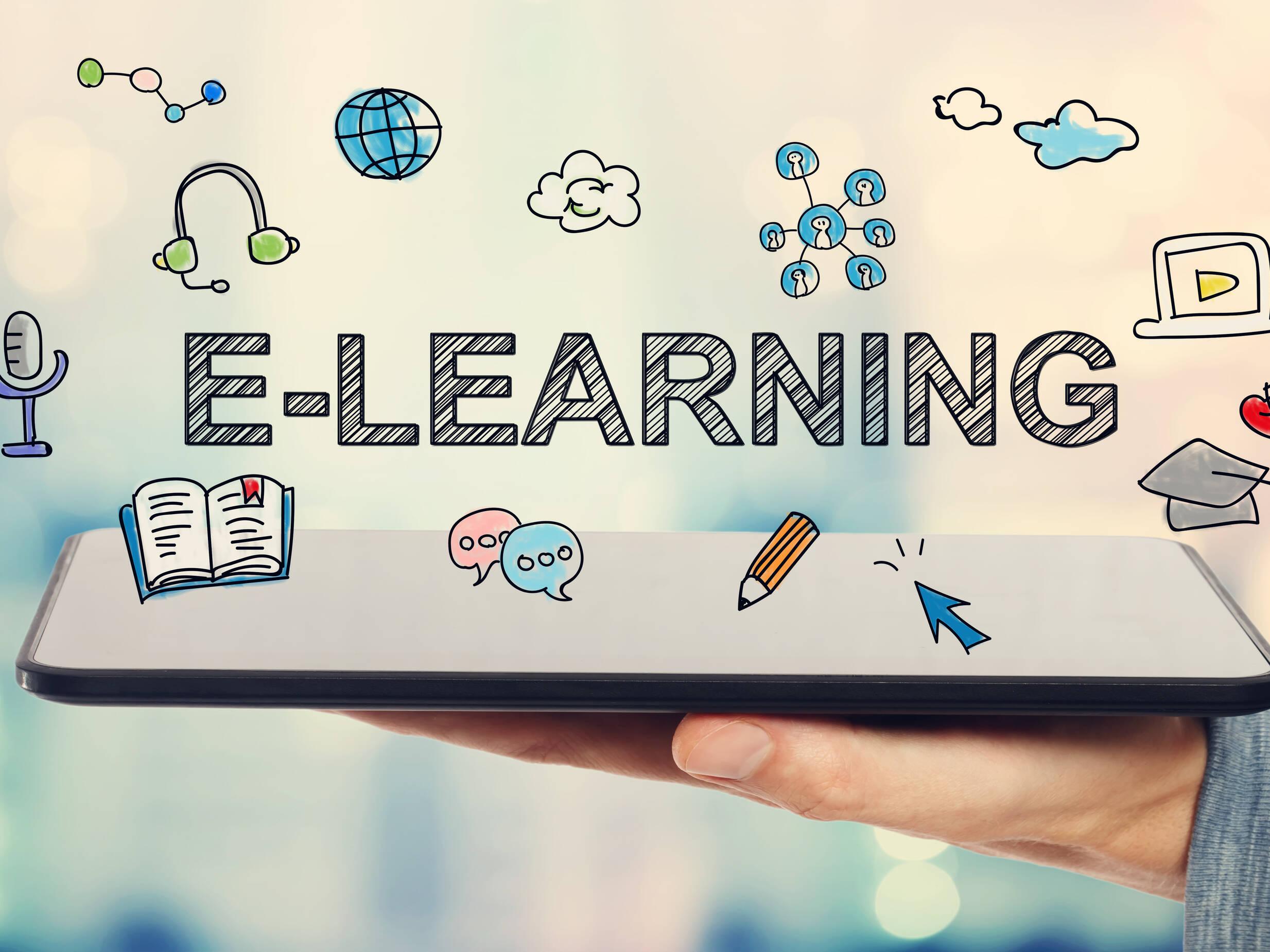
Harnessing the Power of E-Learning for Project Team Development
In today’s fast-paced business environment, the ability to quickly adapt and enhance skills is essential for the success of project teams. E-learning platforms offer a dynamic and flexible solution that empowers teams to learn and grow without the limitations of traditional training methods. By integrating e-learning into your project development strategy, you can create a culture of continuous improvement.
One of the most significant advantages of e-learning is its flexibility. Team members can access training materials at their convenience, allowing them to learn at their own pace while balancing their daily responsibilities. This self-directed approach not only enhances engagement but also fosters a sense of ownership over the learning process. Consider implementing a learning management system (LMS) where modules can be tailored to individual team member needs, ensuring that everyone receives relevant training.
Moreover, e-learning facilitates collaboration among project teams. Interactive modules, discussion forums, and virtual classrooms enable team members to share insights and experiences, bridging gaps in knowledge and fostering teamwork. By encouraging collaboration through these platforms, you cultivate a sense of community and collective problem-solving, essential elements for any successful project.
To make the most of e-learning, focus on creating engaging content that resonates with your team. Utilize a mix of multimedia, such as videos, quizzes, and hands-on projects, to cater to different learning styles. A well-rounded e-learning curriculum should include:
- Video tutorials on essential skills
- Interactive simulations for real-world scenarios
- Short quizzes to reinforce learning
- Discussion boards for knowledge sharing
Implementing e-learning tools can also lead to measurable improvements in performance. Tracking progress through analytics allows project managers to identify skill gaps and make informed decisions about further training needs. Consider using the following metrics to evaluate the effectiveness of your e-learning initiatives:
| Metric | Description |
|---|---|
| Completion Rate | Percentage of team members who finish the training modules. |
| Knowledge Retention | Results from assessments before and after training to measure learning outcomes. |
| Engagement Level | Participation in discussions and activities on the e-learning platform. |
fostering a culture that embraces lifelong learning is pivotal. Encourage team members to continually seek out new knowledge and skills through e-learning opportunities. Highlight success stories within your organization to inspire others to participate actively. When project teams are equipped with current knowledge and skills, they are better prepared to meet challenges head-on, leading to enhanced project outcomes and overall team success.
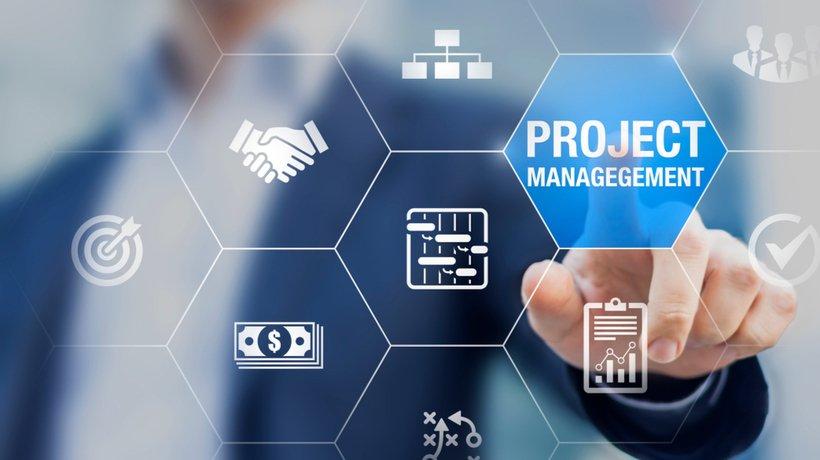
Understanding the Benefits of E-Learning in Project Management
E-learning is revolutionizing the way project teams enhance their skills and knowledge. With the fast-paced nature of project management, traditional training methods can often fall short in meeting the dynamic needs of teams. By integrating e-learning into training programs, organizations can unlock a host of benefits that significantly improve project outcomes.
One of the most compelling advantages of e-learning is flexibility. Team members can engage with training materials at their own pace and convenience, whether during work hours or in their personal time. This flexibility leads to higher retention rates, as learners can revisit complex topics and materials whenever necessary. Additionally, e-learning platforms often include multimedia elements, such as videos and interactive quizzes, which cater to various learning styles and enhance the overall experience.
Moreover, e-learning fosters collaboration among project teams. Many platforms offer discussion forums and group projects, allowing team members to share insights and solve problems collectively. This collaborative approach not only deepens understanding but also strengthens team dynamics, creating a more cohesive and effective workforce. E-learning also facilitates access to expert instructors from around the globe, providing teams with diverse perspectives and cutting-edge knowledge.
Cost-effectiveness is another significant benefit of adopting e-learning for training purposes. Traditional training can be resource-intensive, involving travel expenses, venue rentals, and printed materials. In contrast, e-learning reduces or eliminates these costs, allowing organizations to allocate their budgets more effectively. By investing in e-learning platforms, companies can ensure that their teams receive high-quality training without breaking the bank.
| Benefit | Description |
|---|---|
| Flexibility | Allows team members to learn at their own pace and time. |
| Collaboration | Encourages teamwork through interactive forums and group projects. |
| Cost-Effectiveness | Reduces training-related expenses significantly. |
| Diverse Learning Resources | Offers access to a variety of multimedia resources and expert insights. |
e-learning is instrumental in promoting continuous improvement. The ability to update courses and materials quickly ensures that project teams are always aware of the latest trends and methodologies in project management. This commitment to ongoing education not only enhances individual skill sets but also boosts overall project performance, leading to a more successful and innovative organization.
By embracing e-learning, organizations can empower their project teams to thrive in an ever-evolving landscape. The combination of flexibility, collaboration, cost-effectiveness, diverse resources, and continuous improvement creates a robust training environment that not only meets but exceeds the demands of modern project management.

Identifying Skills Gaps: A Strategic Approach to Training
Identifying skills gaps within project teams is essential for optimizing performance and driving project success. In an ever-evolving business landscape, it’s crucial to align team capabilities with organizational goals. E-learning provides a unique opportunity to not only identify these gaps but also to address them effectively.
To begin, conducting a thorough skills assessment is vital. This involves evaluating current team competencies against industry standards and project requirements. A well-structured assessment can reveal insights into:
- Technical Skills: Are team members proficient in the latest tools and technologies?
- Soft Skills: Does the team possess essential communication and leadership skills?
- Project Management Skills: Are they familiar with best practices and methodologies?
Once skills gaps are identified, the next step is to design a tailored e-learning strategy. This strategy should focus on providing accessibility, flexibility, and interactivity, ensuring that team members engage and retain the necessary knowledge. Consider incorporating:
- Self-paced Modules: Allow team members to learn at their own pace, accommodating various learning styles.
- Webinars and Live Sessions: Facilitate real-time interaction with experts and foster collaborative learning.
- Gamified Learning: Enhance motivation through game-like elements that reward progress.
Utilizing a blended learning approach can further amplify the impact of your training initiatives. By combining e-learning with in-person workshops or mentoring, you can provide a holistic learning experience that caters to diverse needs. A table summarizing the benefits of this approach can be highly effective:
| Learning Method | Benefits |
|---|---|
| E-Learning | Flexible, scalable, and cost-effective |
| In-Person Workshops | Hands-on experience and networking opportunities |
| Mentorship | Personalized guidance and skill reinforcement |
establish a process for evaluating training effectiveness. Regular feedback loops and performance assessments can help you measure the impact of your e-learning programs. Consider implementing:
- Surveys: Gather participant feedback on content quality and relevance.
- Performance Metrics: Track improvements in project delivery and team collaboration.
- Continuous Improvement: Use insights to refine future training initiatives.
By strategically identifying skills gaps and leveraging e-learning, organizations can empower their project teams to thrive in a competitive environment. The right training not only enhances individual capabilities but also strengthens overall team performance, driving project success and innovation.
Choosing the Right E-Learning Platforms for Your Team
In a rapidly evolving corporate landscape, selecting the ideal e-learning platform for your project teams is paramount. The right choice can significantly enhance team performance, foster collaboration, and boost overall engagement. Here are some factors to consider when making your selection:
- User Experience: The platform should be intuitive, with easy navigation and minimal learning curve. A seamless experience encourages team members to engage more deeply with the material.
- Customization Options: Look for platforms that allow you to tailor content to your team’s specific needs. This ensures that training is relevant and applicable to their current projects.
- Integration Capabilities: Your chosen platform should seamlessly integrate with existing tools and systems. Compatibility with project management software, communication tools, and other resources is crucial for a cohesive workflow.
- Analytics and Reporting: Robust analytics features are essential for tracking progress and identifying areas for improvement. Choose a platform that offers insights into user engagement and performance metrics.
- Content Variety: A diverse range of learning formats—such as videos, quizzes, and interactive simulations—can cater to different learning styles, keeping your team engaged and motivated.
Another essential consideration is the quality of support and resources the platform offers. Ensure that there’s ample documentation, tutorials, and customer support available, so your team can troubleshoot issues quickly and effectively. This level of support can make a significant difference in the overall training experience.
Additionally, consider scalability. As your organization grows, your training needs will likely evolve. Choose a platform that can adapt to your expanding requirements without compromising on quality. This way, your team can continue to receive high-quality training as they tackle larger and more complex projects.
don’t underestimate the power of a trial period. Many platforms offer free trials or demos, allowing your team to explore features and functionalities before committing. This hands-on experience can provide valuable insights into whether the platform aligns with your team’s learning objectives.
| Platform Feature | Importance |
|---|---|
| User Experience | High |
| Customization Options | Medium |
| Integration Capabilities | High |
| Analytics and Reporting | High |
| Content Variety | Medium |
| Support Resources | High |
| Scalability | High |
Creating Engaging Content that Resonates with Learners
Creating content that truly engages learners requires understanding their needs, preferences, and the challenges they face. By developing materials that speak directly to these aspects, you can foster a learning environment that not only informs but inspires. Here are some effective strategies to ensure your training content resonates with project teams:
- Know Your Audience: Conduct surveys or hold discussions to gather insights into your team’s existing skills and knowledge gaps. Tailoring your content to reflect their unique situations will enhance relevance.
- Utilize Real-World Scenarios: Integrate case studies and examples that mimic the challenges your project teams encounter. This not only makes learning more applicable but also encourages critical thinking and problem-solving.
- Incorporate Interactive Elements: Use quizzes, polls, and simulations to create a dynamic learning experience. Engagement often leads to better retention of information.
- Visual Storytelling: Leverage infographics, videos, and visual aids to make complex topics more digestible. Visual content can evoke emotions, making the material more memorable.
Furthermore, the structure of your content plays a vital role in maintaining learner attention. Break down lengthy modules into bite-sized lessons to avoid overwhelming participants. This approach not only enhances comprehension but also promotes a sense of achievement as learners complete each segment.
Additionally, consider implementing a feedback loop within your training modules. Allow learners to share their thoughts on the content and its delivery. This not only shows that you value their input but also provides you with valuable data to refine future training efforts.
| Content Strategy | Description |
|---|---|
| Audience Analysis | Gather insights on skills and preferences to tailor content. |
| Real-World Applications | Use relevant scenarios to enhance practical understanding. |
| Interactive Learning | Engage learners through quizzes and simulations. |
| Visual Aids | Incorporate visuals to simplify complex information. |
By embracing these strategies, you can create a training program that not only enhances skills but also builds a collaborative learning culture within your project teams. The key lies in fostering an environment where learners feel engaged and empowered to take ownership of their development.

Implementing Blended Learning for a Comprehensive Experience
Blended learning combines the best of traditional face-to-face instruction and modern digital learning, creating a dynamic environment that fosters engagement and knowledge retention. By integrating e-learning into your training strategy, you can provide project teams with a comprehensive learning experience that adapts to their unique needs. This approach not only enhances understanding but also supports various learning styles, ensuring that every team member gains valuable skills.
To effectively implement blended learning, consider the following elements:
- Flexible Learning Paths: Allow team members to choose their own learning journeys. This can involve a mix of self-paced online modules, live virtual workshops, and in-person sessions.
- Interactive Content: Use engaging multimedia content such as videos, quizzes, and simulations. These elements make learning more enjoyable and help reinforce concepts.
- Regular Check-ins: Schedule periodic assessments to track progress and provide feedback. This ensures that learners stay motivated and can address any challenges they encounter.
Incorporating collaborative tools can also enhance blended learning. Platforms like discussion forums and group projects encourage communication and teamwork, which are crucial for successful project outcomes. By enabling team members to share ideas and collaborate on tasks, you cultivate a culture of continuous learning and improvement.
Another essential aspect is to ensure that the technology used is user-friendly and accessible. A well-designed learning management system (LMS) can streamline the training process and provide analytics to measure engagement and effectiveness. Here’s a simple comparison of some popular LMS options:
| LMS Option | Key Features | Best For |
|---|---|---|
| Moodle | Open-source, customizable, community support | Cost-effective solutions |
| TalentLMS | User-friendly interface, gamification features | Small to medium enterprises |
| Adobe Captivate | Interactive content creation, responsive design | Content-heavy training |
it’s crucial to evaluate the effectiveness of the blended learning program regularly. Gathering feedback through surveys and performance metrics can provide insights into what works well and what needs improvement. By continuously refining your approach, you can ensure that your project teams are not just trained but truly empowered to excel in their roles.
Fostering Collaboration Through Virtual Learning Environments
In today’s fast-paced business environment, the power of collaboration cannot be understated. Virtual learning environments (VLEs) offer a unique opportunity for project teams to come together, share knowledge, and enhance their skills in a flexible setting. By harnessing the capabilities of e-learning, organizations can create a culture of continuous collaboration and improvement.
To maximize the potential of VLEs, consider implementing the following strategies:
- Facilitate Interactive Discussions: Utilize forums and chat rooms within your e-learning platform to encourage open dialogue. Engaging discussions not only foster a sense of community but also promote diverse perspectives on challenging projects.
- Encourage Peer-to-Peer Learning: Create opportunities for team members to teach and learn from each other. Assigning collaborative projects or peer reviews can help individuals share their expertise while developing new skills.
- Implement Real-Time Feedback: Incorporate tools that allow for immediate feedback on collaborative tasks. This can enhance learning outcomes and help teams adjust their strategies in real-time, ensuring everyone is on the same page.
Moreover, e-learning platforms can be tailored to meet the specific needs of project teams. Customizable modules allow you to focus on relevant topics, ensuring that the training is aligned with the team’s objectives and challenges. Consider using mixed media, such as videos, infographics, and interactive quizzes, to cater to different learning styles.
To visualize the effectiveness of collaboration through e-learning, here’s a simple overview of key benefits:
| Benefit | Description |
|---|---|
| Increased Engagement | Interactive elements keep team members involved and motivated. |
| Cost-Effectiveness | Reduces travel and material costs associated with traditional training. |
| Flexible Learning | Team members can access training resources anytime, anywhere. |
| Scalability | Training programs can easily be scaled to accommodate growing teams. |
Ultimately, embracing a virtual learning environment not only equips project teams with essential skills but also cultivates a collaborative spirit. As team members engage in shared learning experiences, they become more aligned with the organization’s vision and goals. The result is a powerful synergy that drives innovation and success.
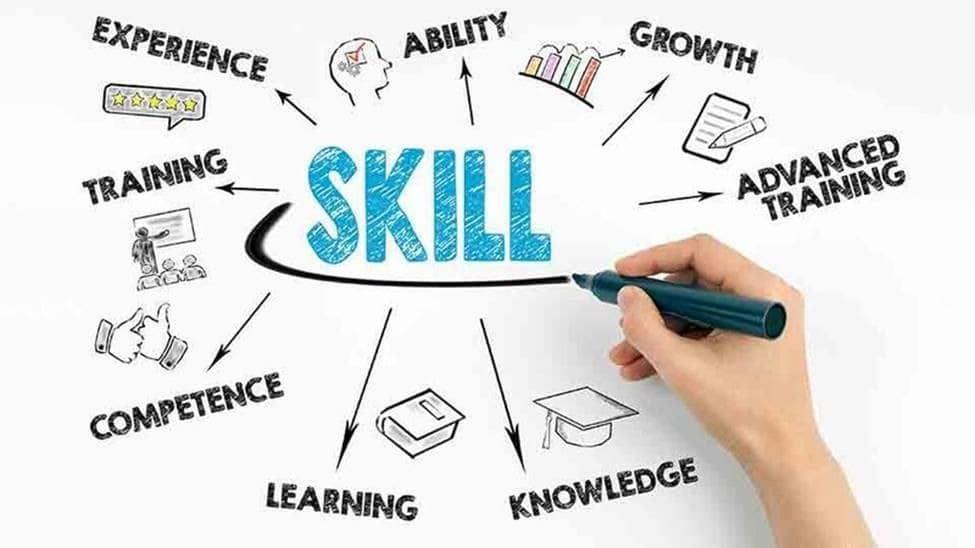
Encouraging Continuous Learning and Development Mindsets
In today’s fast-paced world, fostering a culture of continuous learning and development within project teams is no longer optional; it’s a necessity. With e-learning, organizations have the unique opportunity to create a dynamic learning environment that encourages team members to upskill and adapt to new challenges seamlessly.
E-learning platforms offer a plethora of resources that cater to various learning styles, ensuring that each team member can engage in a manner that suits them best. Here are some benefits of leveraging e-learning for training:
- Flexibility: Team members can learn at their own pace and on their own schedule, making it easier to balance work responsibilities with personal growth.
- Cost-effectiveness: E-learning eliminates the need for travel and accommodations, significantly reducing training costs.
- Customized content: Training modules can be tailored to meet the specific needs and skill gaps of the project team, enhancing relevance and engagement.
- Immediate feedback: Online assessments and quizzes provide instant feedback, enabling learners to identify areas for improvement quickly.
Moreover, it is important to integrate social learning opportunities within e-learning platforms. Encouraging team collaboration through discussion forums, group projects, and peer-to-peer feedback can significantly enhance the learning experience. This not only promotes knowledge sharing but also strengthens team bonds and camaraderie.
To sustain this culture of continuous learning, organizations can implement systems to recognize and reward team members who actively engage in e-learning. For instance:
| Recognition Method | Benefit |
|---|---|
| Certificates of Completion | Motivates learners and adds to their professional credentials. |
| Leaderboards | Encourages friendly competition and drives engagement. |
| Team Challenges | Fosters collaboration while enhancing skills relevant to projects. |
As project teams are equipped with new skills and knowledge, it’s essential to create pathways for them to apply what they’ve learned in real-time. Encourage team leaders to facilitate ‘Lunch and Learn’ sessions or project debriefs where team members can share insights and lessons from their e-learning experiences. This reinforces the knowledge gained and demonstrates how it can be applied in practical scenarios.
Ultimately, embracing e-learning as a core element of training not only prepares project teams for immediate challenges but also instills a mindset geared towards lifelong learning. By nurturing this environment, organizations can cultivate innovative thinkers who are ready to tackle the complexities of tomorrow’s projects with confidence and agility.
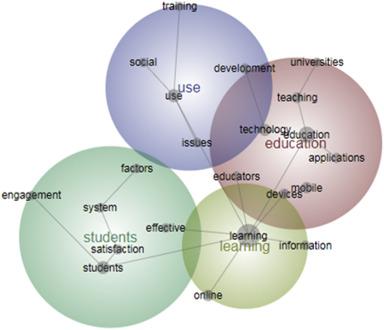
Measuring Success: Key Metrics for E-Learning Effectiveness
In the evolving landscape of e-learning, measuring the effectiveness of training programs is essential for ensuring that project teams gain the necessary skills and knowledge. Tracking the right metrics allows organizations to not only assess the impact of their e-learning initiatives but also to refine and enhance future training efforts. Here are some key metrics that can illuminate the success of your e-learning programs.
- Completion Rates: Understanding the percentage of team members who complete training modules is a fundamental metric. High completion rates often indicate engaging content, while low rates may signal the need for improvements in course design or accessibility.
- Assessment Scores: Evaluating learners’ performance through quizzes and assessments helps in measuring knowledge retention. High scores indicate effective learning, while a pattern of low scores can reveal areas that require further emphasis in training sessions.
- Time on Task: Tracking the amount of time team members spend on e-learning modules can provide insights into both engagement and content difficulty. A significant discrepancy between expected and actual time spent may suggest that content is either too complex or not engaging enough.
- Feedback and Satisfaction Ratings: Post-training surveys can be invaluable in gauging the learners’ experience. Collecting qualitative feedback alongside quantitative satisfaction ratings will paint a fuller picture of the training’s impact.
- Behavior Change: Ultimately, the effectiveness of e-learning can be measured by observing changes in behavior on the job. This can be assessed through performance reviews, peer feedback, and the achievement of specific project milestones post-training.
To provide a more structured analysis, consider employing a scoring system that consolidates these metrics into a comprehensive effectiveness score. Below is an example table showcasing how you might categorize and score key metrics:
| Metric | Score (1-5) | Comments |
|---|---|---|
| Completion Rate | 4 | High engagement; requires minor improvements. |
| Assessment Scores | 3 | Moderate understanding; needs additional resources. |
| Time on Task | 5 | Great engagement; content is well-received. |
| Feedback Ratings | 4 | Positive feedback; slight content adjustments recommended. |
| Behavior Change | 3 | Some improvement noted; follow-up training needed. |
By systematically tracking these metrics, organizations can create a feedback loop that not only measures success but also drives continuous improvement for their e-learning programs. Transforming raw data into actionable insights empowers project teams to thrive, adapt, and excel in an ever-changing environment.
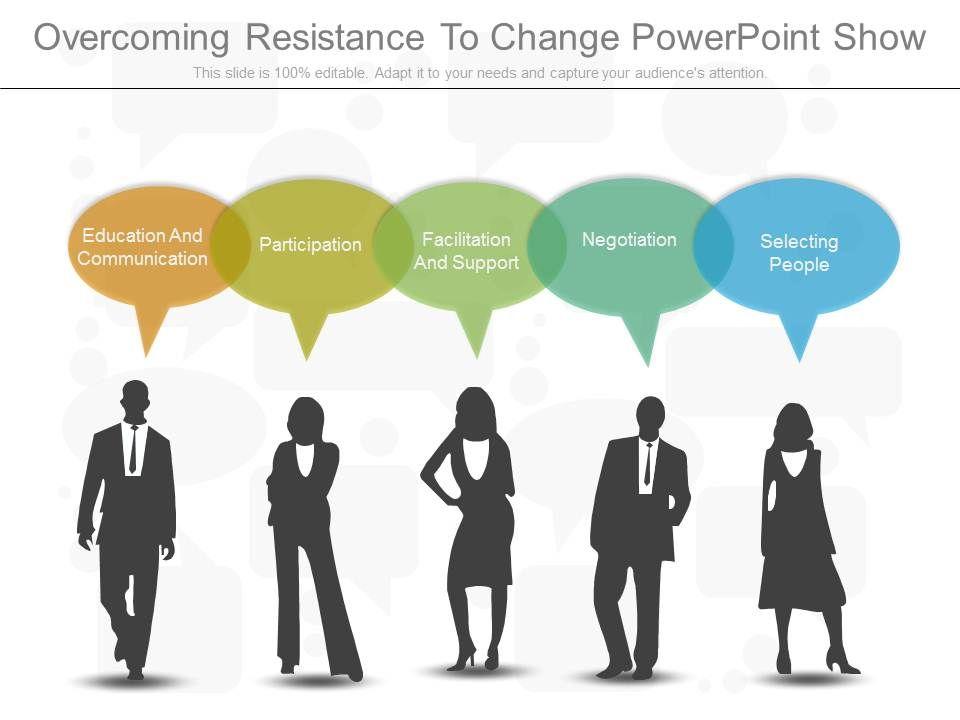
Overcoming Resistance to Change in Project Teams
In the dynamic landscape of project management, the fear of change can often hinder progress and innovation within teams. One of the most effective ways to combat this resistance is through e-learning, which not only provides essential training but also empowers team members to adopt new practices and technologies confidently.
To harness the full potential of e-learning, consider the following strategies:
- Interactive Modules: Create engaging content that encourages active participation. Interactive quizzes, simulations, and case studies can make learning more relatable and memorable.
- Microlearning: Break down training into bite-sized lessons that can be consumed quickly. This approach minimizes overwhelm and allows team members to learn at their own pace.
- Real-World Applications: Use examples and scenarios that reflect actual project challenges. This relevance helps team members see the value of learning and increases their willingness to embrace change.
Building a culture that embraces continuous learning is crucial. Utilize e-learning platforms to foster a sense of community among team members. Encourage peer interactions through forums and discussion boards, where they can share insights and experiences. This collaborative environment not only boosts morale but also mitigates the fear of change as team members learn from one another.
To track progress and provide feedback effectively, consider implementing a simple assessment framework. Below is a sample table that outlines different learning outcomes and metrics for evaluation:
| Learning Outcome | Evaluation Metric | Target Percentage |
|---|---|---|
| Understand new project management tools | Quiz Results | 80% |
| Apply learned concepts to real projects | Project Feedback | 75% |
| Engage in team discussions effectively | Participation Rate | 90% |
Lastly, celebrate achievements, both big and small. Recognizing individuals and teams for their learning milestones fosters a positive atmosphere and encourages further engagement. When team members see tangible rewards for their efforts, they are more likely to embrace ongoing changes and contribute to a culture of innovation.
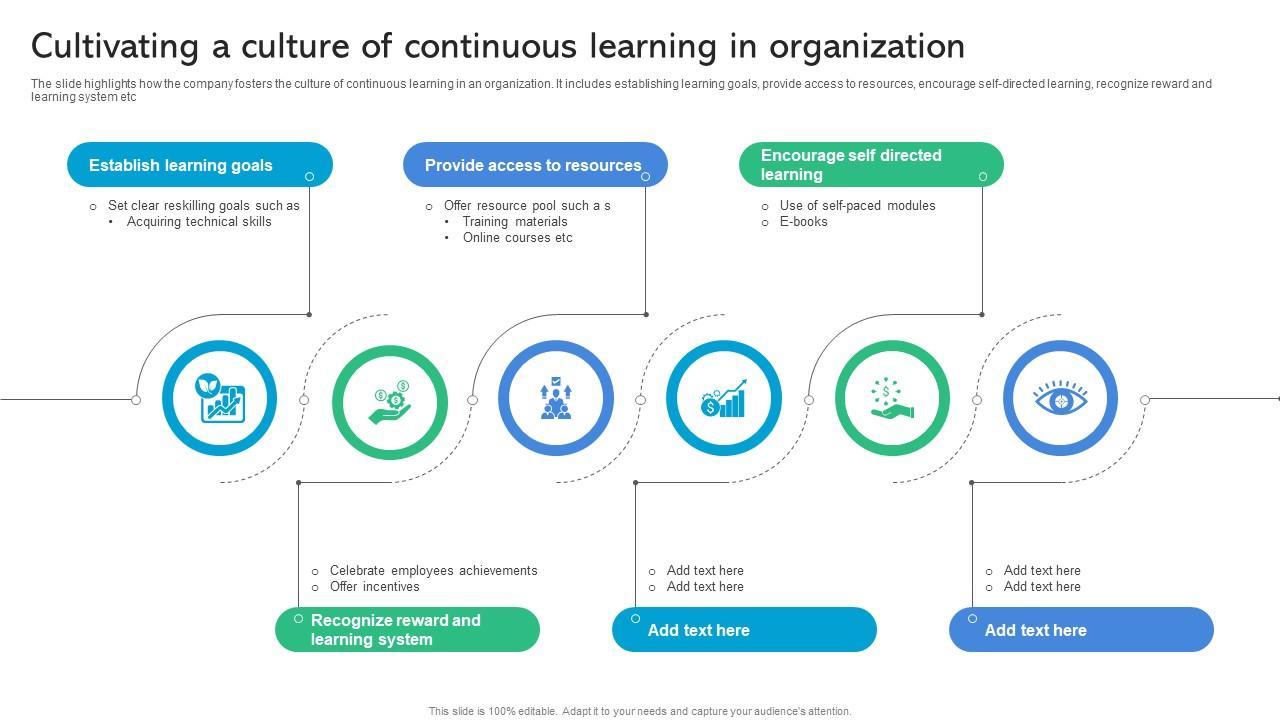
Cultivating a Culture of Learning Within Your Organization
In today’s fast-paced business environment, fostering a culture of continuous learning is crucial for the success of any organization. E-learning serves as a powerful tool to facilitate this culture, particularly for project teams that require agility and up-to-date skills. By embracing online learning platforms, organizations can ensure that their teams are not only well-versed in current methodologies but are also prepared to adapt to the ever-evolving landscape of their industries.
Personalized Learning Paths allow team members to engage with material that is most relevant to their roles. Through assessments and feedback, e-learning platforms can tailor courses to fit individual needs, ensuring that each team member receives the training that will enhance their specific contributions. This customization fosters a sense of ownership over one’s learning journey, motivating employees to take charge of their professional development.
Flexibility is another key advantage of e-learning. Team members can access training materials at their convenience, whether it’s during a lunch break or in the comfort of their homes. This flexibility not only accommodates diverse schedules but also allows for a better work-life balance, resulting in happier and more productive employees. When team members can learn at their own pace, they are more likely to retain information and apply new skills effectively.
Integrating gamification elements into training programs can significantly enhance engagement. By incorporating quizzes, badges, and leaderboards, organizations can create a competitive yet supportive learning environment. Team members are more likely to participate and complete training modules when they feel part of a larger community striving for excellence. This gamified approach not only makes learning fun but also promotes collaboration as team members share insights and achievements.
To ensure that the transition to e-learning is smooth and effective, organizations can implement regular evaluation and feedback mechanisms. By collecting data on course completion rates, learner satisfaction, and skill application, leaders can make informed decisions on course effectiveness and areas for improvement. This iterative process not only enhances the quality of training programs but also reinforces the organization’s commitment to a culture of learning.
| Benefits of E-Learning | Description |
|---|---|
| Cost-Effective | Reduces training expenses associated with travel and materials. |
| Scalable | Easily accommodates growing teams without significant additional costs. |
| Continuous Updates | Training content can be updated quickly to reflect industry changes. |
| Enhanced Collaboration | Promotes knowledge sharing through discussion forums and group projects. |
Ultimately, the integration of e-learning into training and upskilling initiatives is not just about acquiring new knowledge; it’s about nurturing a mindset that values growth and adaptability. By providing the tools and environment for ongoing education, organizations can empower their project teams to excel, innovate, and lead in their respective fields. Embracing a culture of learning today paves the way for a more resilient and skilled workforce tomorrow.

Empowering Team Leaders to Drive E-Learning Initiatives
In today’s fast-paced digital landscape, empowering team leaders to harness the potential of e-learning initiatives is essential for fostering a culture of continuous improvement and growth. By equipping leaders with the right tools and strategies, organizations can effectively drive the training and upskilling of project teams, ensuring they adapt to evolving demands.
Key Strategies for Team Leaders
- Identify Learning Objectives: Establish clear goals for team training sessions, ensuring all members understand the purpose and desired outcomes.
- Leverage Technology: Utilize versatile e-learning platforms that offer interactive content, real-time feedback, and performance analytics to enhance engagement.
- Encourage Collaboration: Foster a collaborative environment where team members can share insights, resources, and experiences, enhancing collective learning.
- Monitor Progress: Implement tracking mechanisms to evaluate the effectiveness of training programs, allowing for timely adjustments and improvements.
One of the most effective approaches is to integrate microlearning into the e-learning strategy. This method breaks down complex topics into bite-sized modules, making it easier for team members to absorb information without feeling overwhelmed. Microlearning not only increases retention but also fits conveniently into busy schedules.
Table: Benefits of Microlearning
| Benefit | Description |
|---|---|
| Increased Retention | Short, focused lessons are easier to remember. |
| Flexibility | Modules can be accessed anytime, anywhere. |
| Higher Engagement | Interactive content keeps learners motivated. |
Another vital component is fostering an environment of feedback and recognition. Team leaders should regularly solicit input from team members regarding the e-learning modules and their impact on performance. This not only helps in refining the training materials but also encourages a sense of ownership among team members. Recognizing achievements, however small, reinforces positive behavior and motivates continued learning.
Ultimately, successful e-learning initiatives hinge on the commitment and enthusiasm of team leaders. By embracing innovative training solutions and creating a supportive atmosphere, they can inspire their teams to not only meet but exceed their potential. As they champion the cause of e-learning, they pave the way for a more knowledgeable, agile, and empowered workforce ready to tackle the challenges of tomorrow.

Leveraging Feedback to Enhance E-Learning Experiences
In the ever-evolving landscape of e-learning, the key to creating impactful training experiences lies in the ability to actively leverage feedback. By integrating feedback mechanisms into the learning process, organizations can refine their approaches and ensure that project teams are not just learning, but truly engaging with the material.
Understanding Learner Needs
To effectively use feedback, it’s crucial to first understand the unique needs of your learners. Conducting surveys or informal check-ins can provide valuable insights into what aspects of the training resonate with your project teams and which areas require further enhancement. By focusing on:
- Engagement levels: Are learners actively participating in discussions?
- Content relevance: Does the material align with their day-to-day challenges?
- Learning pace: Are they able to absorb the information effectively?
By addressing these points, you can tailor the e-learning experience to better fit your team’s dynamics.
Incorporating Feedback Mechanisms
Once you have gathered initial insights, the next step is to establish clear feedback mechanisms throughout the training program. Consider implementing:
- Instant polls: Use quick polls during sessions to gauge reactions to specific content.
- Discussion boards: Create forums for participants to voice their thoughts and suggestions.
- Reflection exercises: Encourage learners to share what they found most valuable after each module.
These tools not only foster a culture of open communication but also provide ongoing data that can inform future training sessions.
Analyzing Feedback for Continuous Improvement
Feedback is only as powerful as the actions taken based on it. Regularly analyze the feedback collected to identify trends and patterns. For example, if multiple learners express confusion about a particular module, it may indicate that the content needs to be simplified or presented differently. Create a feedback loop by:
| Feedback Type | Actionable Insight |
|---|---|
| Content Clarity | Simplify language or provide additional resources |
| Engagement Level | Incorporate more interactive elements |
| Relevance | Align training with real-world projects |
This iterative approach not only enhances the e-learning content but also empowers your teams to take ownership of their learning journey.
Celebrating Progress and Successes
Don’t forget to celebrate the milestones achieved as you adapt your training programs based on feedback. Recognizing individual and team achievements can significantly boost motivation and engagement. Share success stories, highlight improvements made through feedback, and encourage a collaborative spirit. This positive reinforcement can transform the learning experience from a chore into an exciting and rewarding journey.

Celebrating Achievements: Recognizing Upskilling and Growth
In today’s fast-paced business environment, the ability to adapt and grow is crucial. E-learning provides a platform where project teams can enhance their skills, gain new knowledge, and ultimately celebrate their achievements. By investing in the development of team members, organizations foster a culture of continuous improvement and innovation.
Benefits of E-Learning in Upskilling:
- Flexibility: Team members can learn at their own pace, allowing them to balance work commitments with professional development.
- Cost-Effectiveness: E-learning reduces the need for travel and physical materials, providing a more budget-friendly training solution.
- Personalized Learning Paths: Customized courses can be tailored to meet the specific needs of team members, ensuring targeted skill enhancement.
One of the key advantages of e-learning is the ability to track progress and measure outcomes. Using integrated assessment tools, organizations can monitor how well team members are absorbing new information and applying it in their roles. This data not only showcases individual achievement but also highlights collective growth within the team.
Creating a Culture of Recognition:
To truly celebrate achievements, it’s essential to recognize and reward team members’ progress. Consider implementing:
- Monthly Spotlights: Highlighting individual accomplishments and sharing success stories within the organization.
- Certificates of Completion: Offering formal recognition for completed training modules, enhancing both morale and motivation.
- Team Challenges: Creating friendly competitions that encourage collaboration and skill-sharing among team members.
To visually represent the impact of upskilling efforts, organizations can create a table showcasing the skills gained and the subsequent project impacts. This not only motivates team members but also provides leadership with tangible evidence of the benefits of training initiatives.
| Skill Acquired | Project Impact |
|---|---|
| Agile Methodologies | Increased project delivery speed by 20% |
| Data Analysis | Improved decision-making accuracy by 30% |
| Communication Strategies | Enhanced team collaboration and reduced misunderstandings |
By integrating e-learning into training programs, organizations not only enhance the capabilities of their project teams but also cultivate a positive environment where achievements are celebrated. This commitment to growth and recognition inspires individuals to strive for excellence, ultimately driving success for the entire organization.
Frequently Asked Questions (FAQ)
Q&A: How to Use E-Learning to Train and Upskill Project Teams
Q1: Why should organizations consider e-learning for training project teams?
A1: Organizations should embrace e-learning because it offers unparalleled flexibility and accessibility. In a fast-paced business environment, traditional training methods can be time-consuming and often lack engagement. E-learning platforms allow project teams to learn at their own pace, revisit complex topics, and access a wealth of resources anytime, anywhere. This adaptability not only enhances knowledge retention but also fosters a culture of continuous learning, empowering teams to stay ahead in their fields.
Q2: What are the key benefits of e-learning for project teams?
A2: The benefits of e-learning for project teams are numerous. Firstly, it provides personalized learning experiences tailored to individual skill levels and needs. Secondly, e-learning can significantly reduce training costs, eliminating the need for physical materials and travel expenses. Additionally, it promotes collaboration through interactive modules that encourage team discussions and peer learning. Ultimately, e-learning cultivates a motivated workforce that is equipped with the latest skills and knowledge, ensuring project success.
Q3: How can organizations effectively implement e-learning for their project teams?
A3: Successful implementation of e-learning begins with a clear strategy. Organizations should assess their team’s current skill levels and identify areas for improvement. Next, select a reputable e-learning platform that aligns with your team’s objectives. Incorporate a blend of engaging content, such as videos, quizzes, and real-world scenarios, to enhance the learning experience. Furthermore, establish a feedback loop where team members can share their insights, fostering a culture of collaboration and continuous improvement.
Q4: What types of training can be effectively delivered through e-learning?
A4: E-learning is versatile and can cater to a variety of training needs. It is particularly effective for soft skills development, such as leadership, communication, and conflict resolution, which are essential for project management. Technical skills training can also be delivered through e-learning, with modules on tools and technologies relevant to your projects. Additionally, onboarding new team members can be streamlined with e-learning, ensuring they are quickly brought up to speed with organizational processes and project methodologies.
Q5: How can organizations measure the effectiveness of e-learning programs?
A5: Measuring the effectiveness of e-learning programs is crucial for ongoing success. Organizations can utilize metrics such as completion rates, assessment scores, and participant feedback to gauge engagement and understanding. Additionally, tracking the application of new skills in real projects is vital; consider implementing performance reviews or project evaluations post-training. By analyzing these data points, organizations can refine their e-learning initiatives to better meet the evolving needs of their project teams.
Q6: How can e-learning foster a culture of continuous learning within project teams?
A6: E-learning inherently promotes a culture of continuous learning by providing resources that empower team members to take charge of their development. By encouraging self-directed learning, organizations signal that ongoing education is valued and essential for growth. Additionally, creating a library of e-learning modules that team members can access anytime nurtures curiosity and a desire to innovate. When project teams see their organization investing in their skills, it inspires commitment and a proactive approach to personal and professional development.
Q7: What final thoughts can you share about the future of e-learning in training project teams?
A7: The future of e-learning is bright and brimming with potential. As technology continues to evolve, so will e-learning methodologies, incorporating immersive experiences like virtual reality and artificial intelligence to further enhance engagement and effectiveness. Organizations that embrace e-learning now will not only equip their project teams with essential skills but also position themselves as leaders in their industries. By fostering a culture of learning, innovation, and adaptability, businesses can navigate challenges with confidence and achieve remarkable success together. Let’s seize this opportunity to empower our teams and build a brighter future!
To Wrap It Up
As we navigate an increasingly digital world, the power of e-learning in training and upskilling project teams cannot be overstated. Embracing this innovative approach not only enhances individual capabilities but also fosters a culture of continuous improvement and collaboration within your organization. By harnessing the flexibility and accessibility of e-learning, you empower your teams to learn at their own pace, gain new skills, and ultimately drive project success to new heights.
Now is the time to take action—invest in your team’s future by integrating e-learning into your training programs. The opportunities for growth and development are boundless, and with each course completed, your project teams will emerge more agile, knowledgeable, and equipped to tackle the challenges ahead. Remember, the journey of a thousand miles begins with a single step; let that step be the commitment to e-learning. Together, let’s build a brighter, more skilled future for your organization, one e-learning module at a time. Embrace the change, inspire the growth, and watch your project teams flourish like never before.




